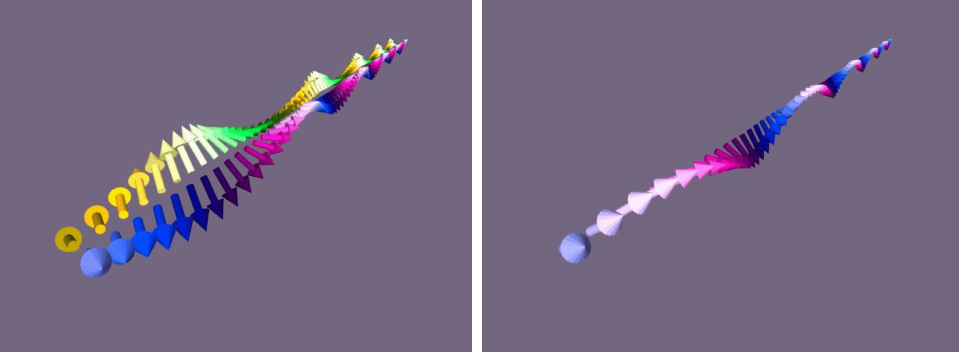Proven in 60 years… World’s first report on left-handed spin waves
- Writerkrissadmin
- Date2020-06-30 00:00
- Hits548
Proven in 60 years… World’s first report on left-handed spin waves
- New paradigm in development of spin-based ultra-low-power, high-speed, large-capacity memory devices -
# To date, semiconductor-based devices have developed by controlling magnetic field, which considers electronic charge, but not spin. Such devices are physically limited in terms of memory storage, and heat release due to their miniaturized size. Against this backdrop, spin research has grown popular for possible applications in the development of ultra-low-power, high-speed, and large-capacity memory devices.
The Quantum Spin Team of the Quantum Technology Institute at Korea Research Institute of Standards and Science (KRISS, President Hyun-Min Park) became the world’s first institute to demonstrate the physics of left-handed spin waves, introduced as a theory in the 1960s. This is expected to open up new possibilities in the development of spin-based devices.
In a joint study with Dr. Soogil Lee, Professor Kab-Jin Kim, and Professor Se Kwon Kim of the Korea Advanced Institute of Science and Technology (KAIST), the Quantum Spin Team of the Quantum Technology Institute (senior researcher Changsoo Kim, principal researcher Chanyong Hwang) measured spin waves undergoing left-handed precession** in CoGd ferrimagnets* having varying proportions of Co and Gd, and revealed the related physical phenomena.
*Ferrimagnet: A magnetic material comprised of different sized atoms with opposing magnetic moments
**Precession: A change in the orientation of the rotational axis of a rotating body

▲ A image of magnetization's right and left handed spin inside ferromagnets and CoGd ferrimagnets (left),
A image of measurement of spin waves and Brillouin scattering measurement (right)
Spintronics, which combines “spin” and “electronics,” is a technique that simultaneously controls electronic charge and spin, and offers promise in overcoming technical limitations of electronic devices.
Spin waves representing collective movement of spins can be applied to high-speed low-power devices due to their high operating frequency and low power consumption.
In spintronics, information storage is enabled by freely controlling the spin direction of electrons. However, this involves complicated research on physical factors and control of spin, and analysis of spin direction.
Magnets that we can commonly find around us can be divided into smaller magnets, each having a spin. When a magnetic field is applied, the small magnets engage in right-handed precession.

▲ A image of left-handed precession of magnets(left),
A image of right-handed precession of magnets(right)
Since cobalt magnetization is anti-parallel to that of gadolinium, the larger rotational inertia of gadolinium causes CoGd ferrimagnets to have left-handed spin. Left-handed spin was predicted with theories on the precession of ferrimagnets in the 1960s, but was not experimentally verified before this study.
The team experimentally investigated spin waves using Brillouin light scattering, which utilizes collisions between light and spin waves. After placing the CoGd ferrimagnet in the path of laser and inducing collision with spin waves, the reflected light was analyzed to determine the energy and momentum of spin waves.
This study was the first to observe left-handed spin in the unit of tens of picoseconds (ps, one trillionth of a second), and showed that compensation temperature increases as spin wave energy approaches 0 and magnetic field increases.

▲ The Quantum Spin Team of the Quantum Technology Institute at KRISS is analyzing spin waves doing left-handed precession
Principal researcher Chanyong Hwang said, “Until now, theories and experiments were focused only on right-handed spin waves. This first-ever report on left-handed spin waves will pave the way forward for next-generation spintronics.”
Supported by the Creative Allied Project (CAP) grant of the National Research Council of Science & Technology, and Future Materials Discovery Program of the National Research Foundation of Korea, the study was published online in Nature Materials (IF: 38.887) on June 30.

